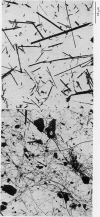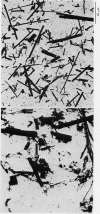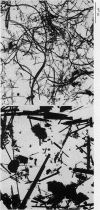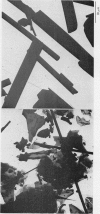Abstract
Four experiments in which SPF Wistar rats were inoculated intrapleurally with asbestos or other materials are described. Mesotheliomata were observed in a considerable proportion of animals with all the samples of asbestos used and with a sample of brucite. A few were produced with synthetic aluminium silicate fibres and single ones with barium sulphate, glass powder and aluminium oxide. The risk of developing a mesothelioma at a given time after injection was approximately proportional to the dose. Of the UICC standard reference samples, crocidolite was the most carcinogenic and removal of the oils by benzene extraction did not alter the carcinogenicity of these samples. Chemical properties also seem unlikely to be the main factor producing mesotheliomata but the results support the hypothesis that the finer fibres are the more carcinogenic, and this is additional to the known aerodynamic advantage which the finer fibres have in penetrating to the periphery of the lung.
Full text
PDF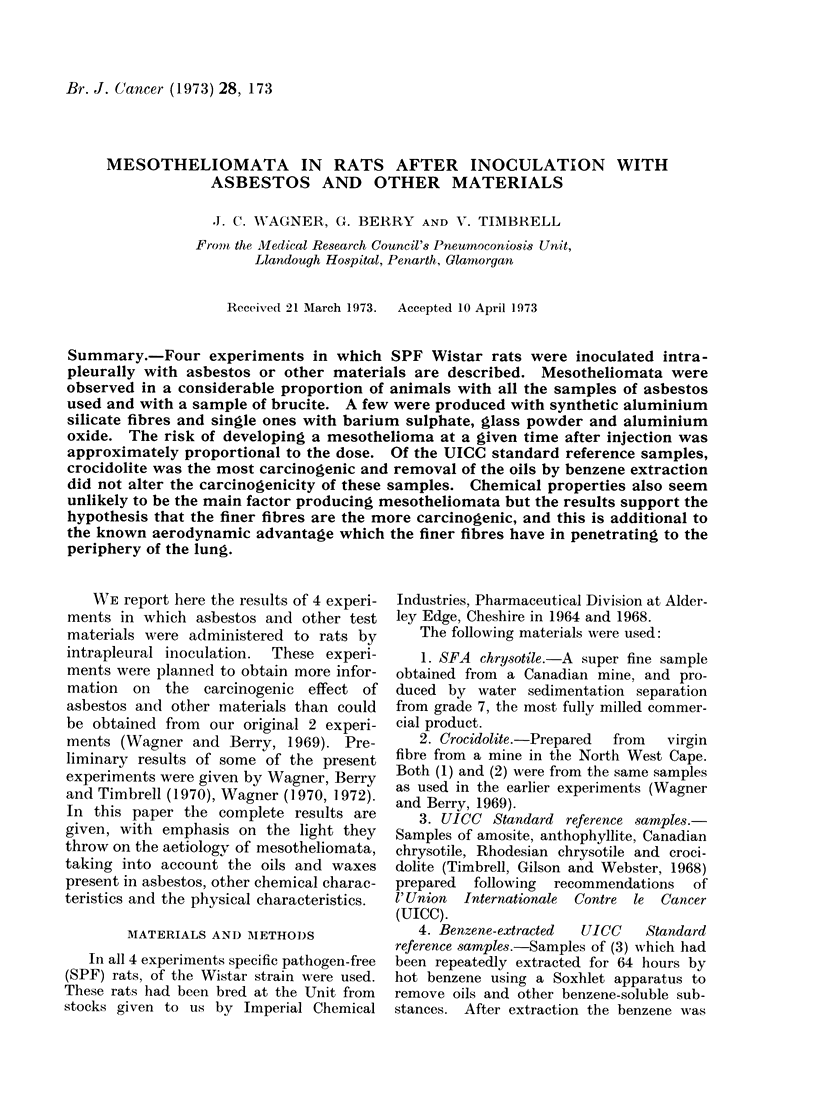

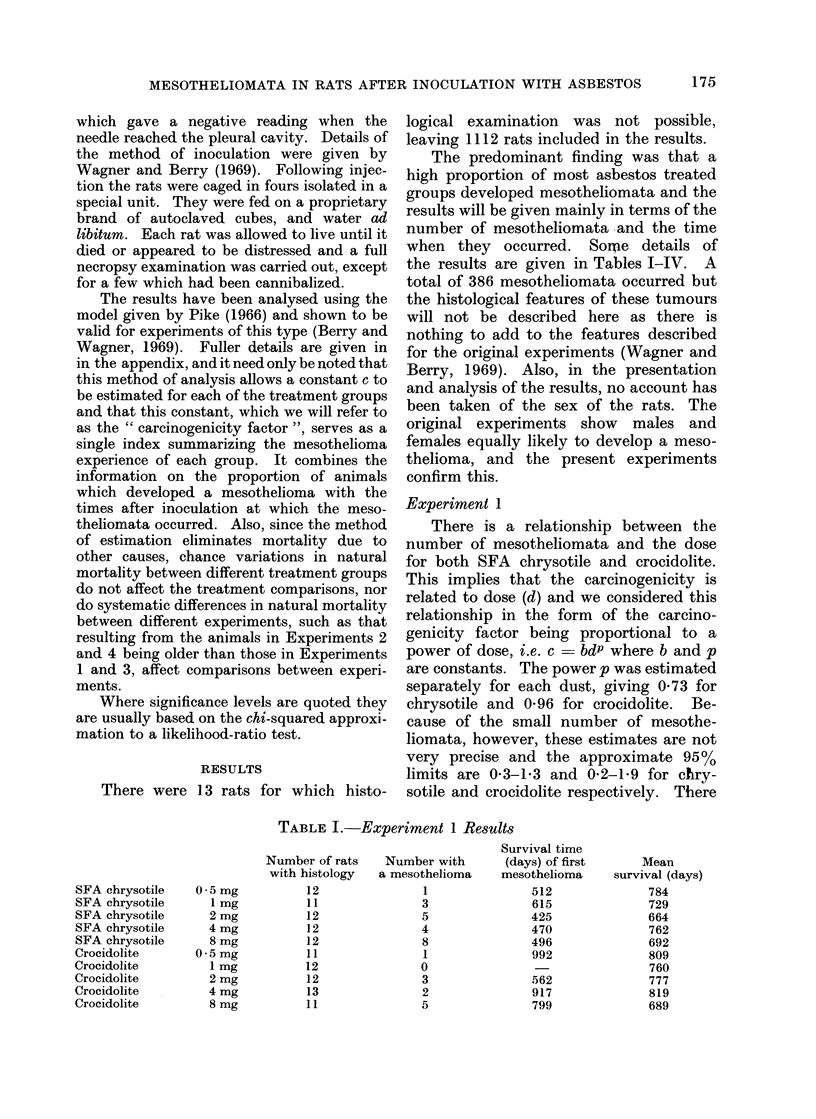
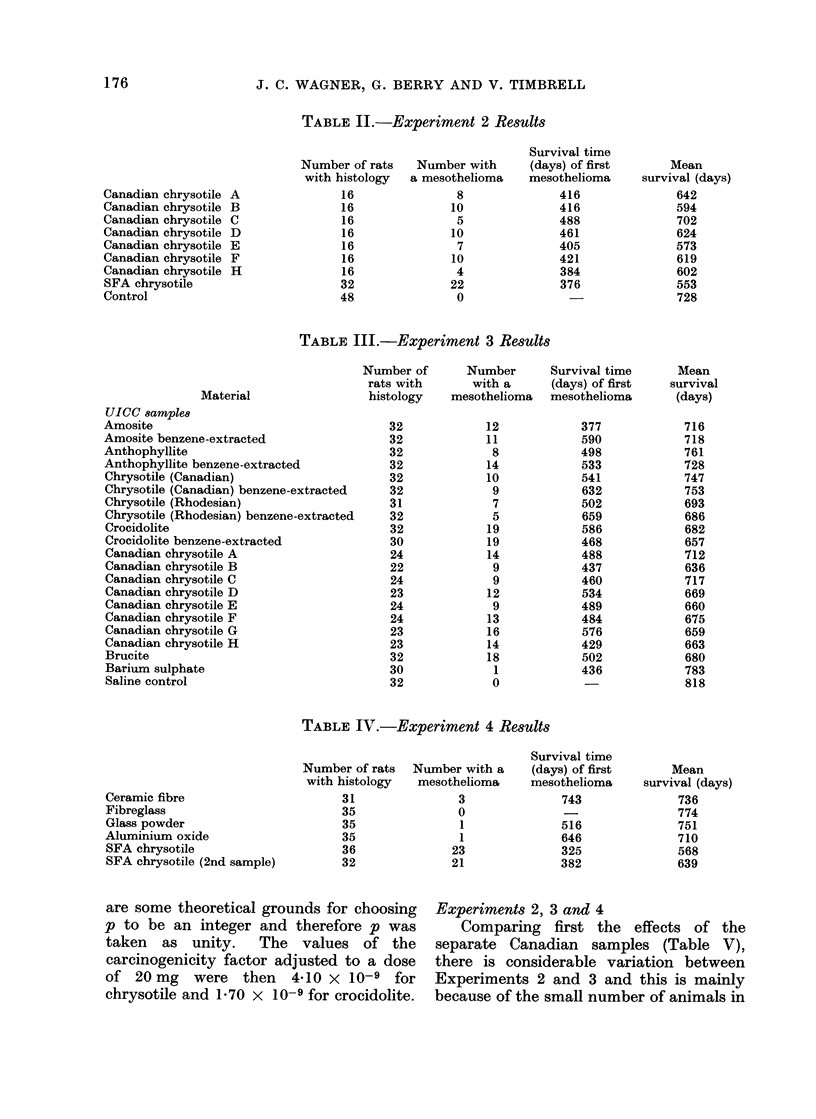
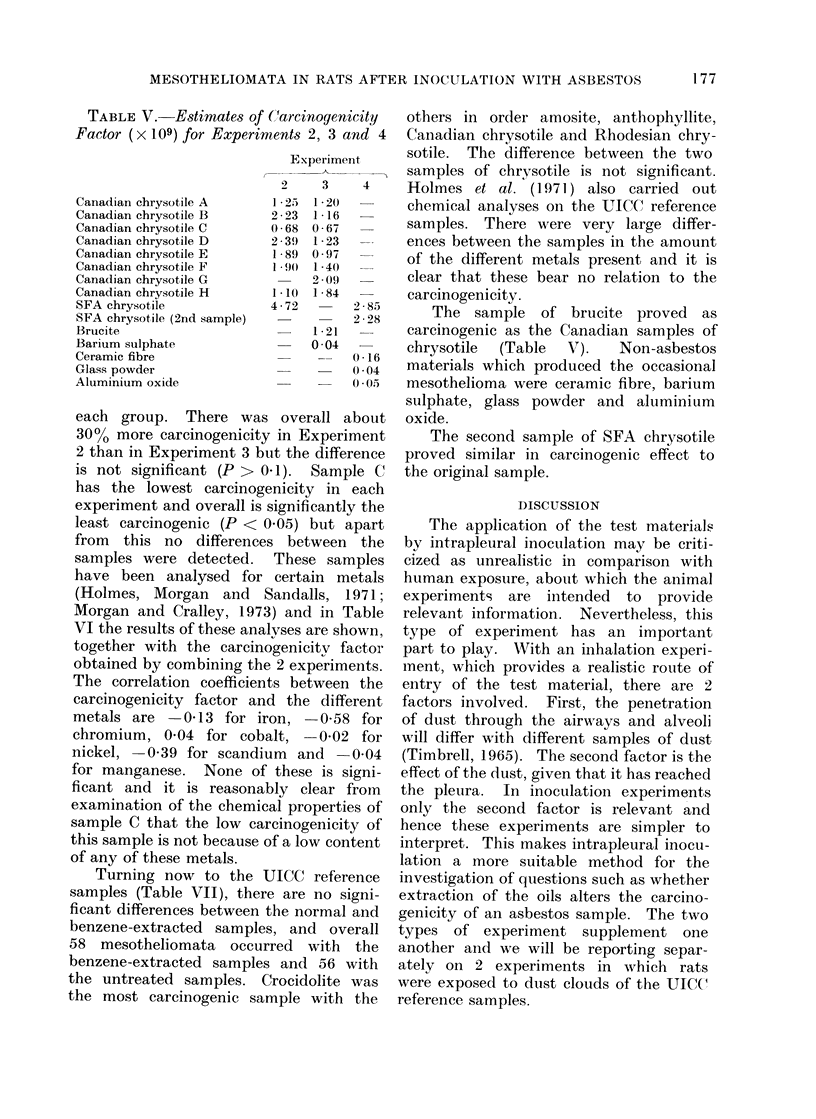
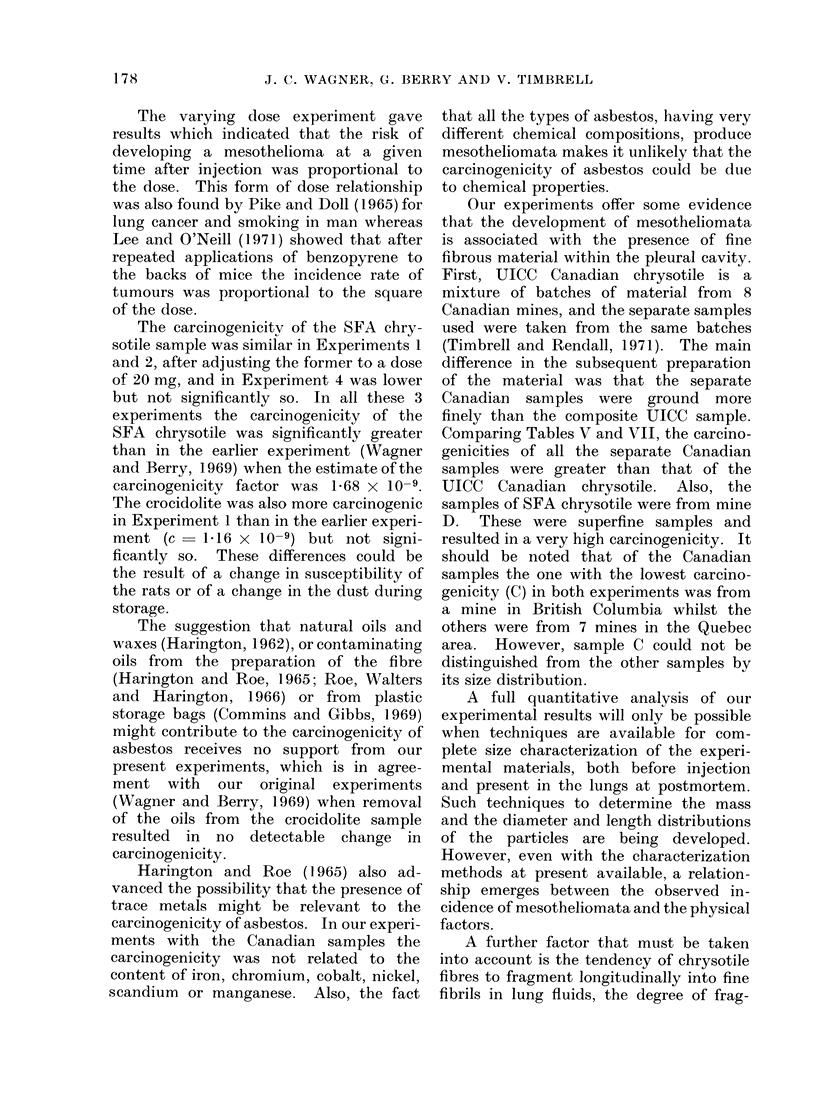
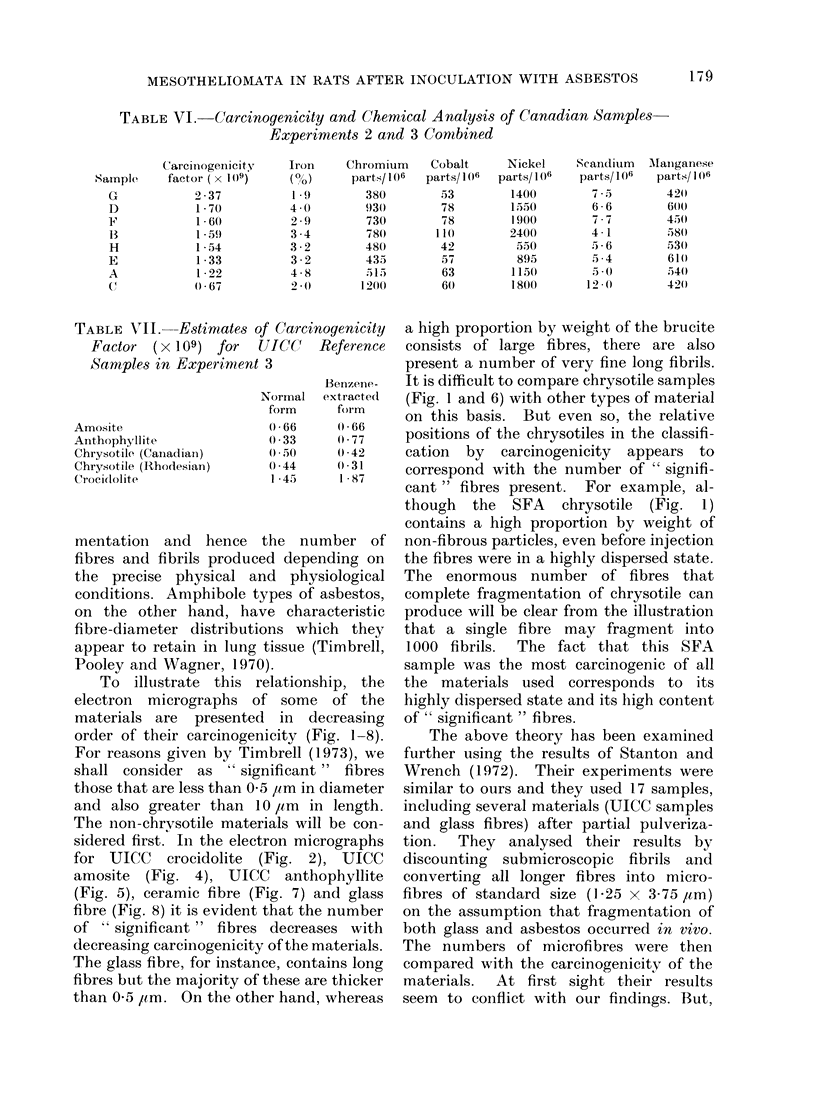
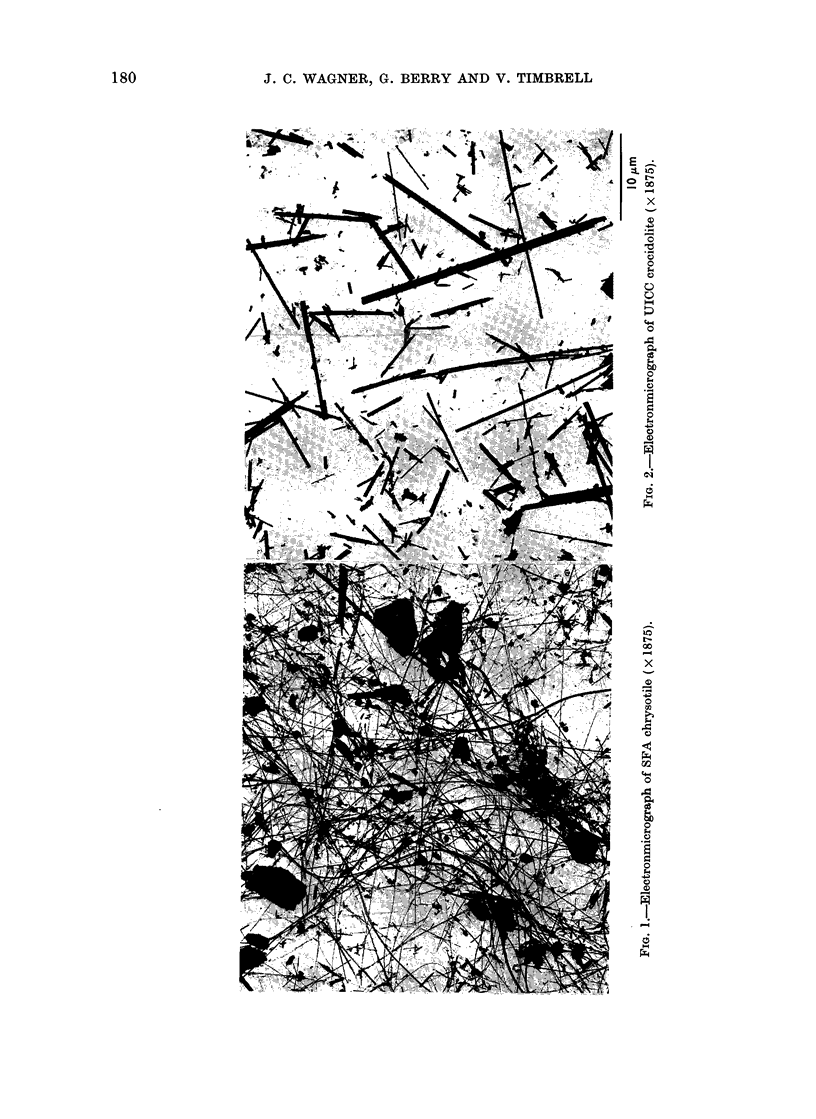
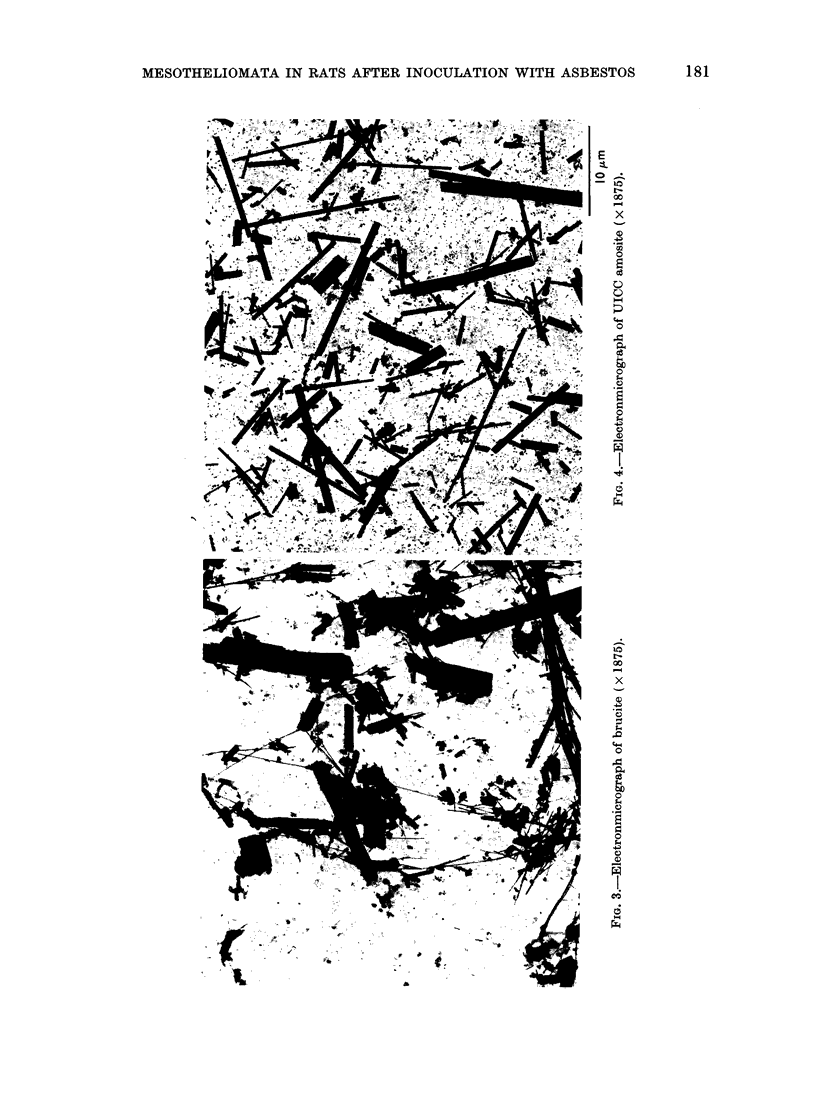
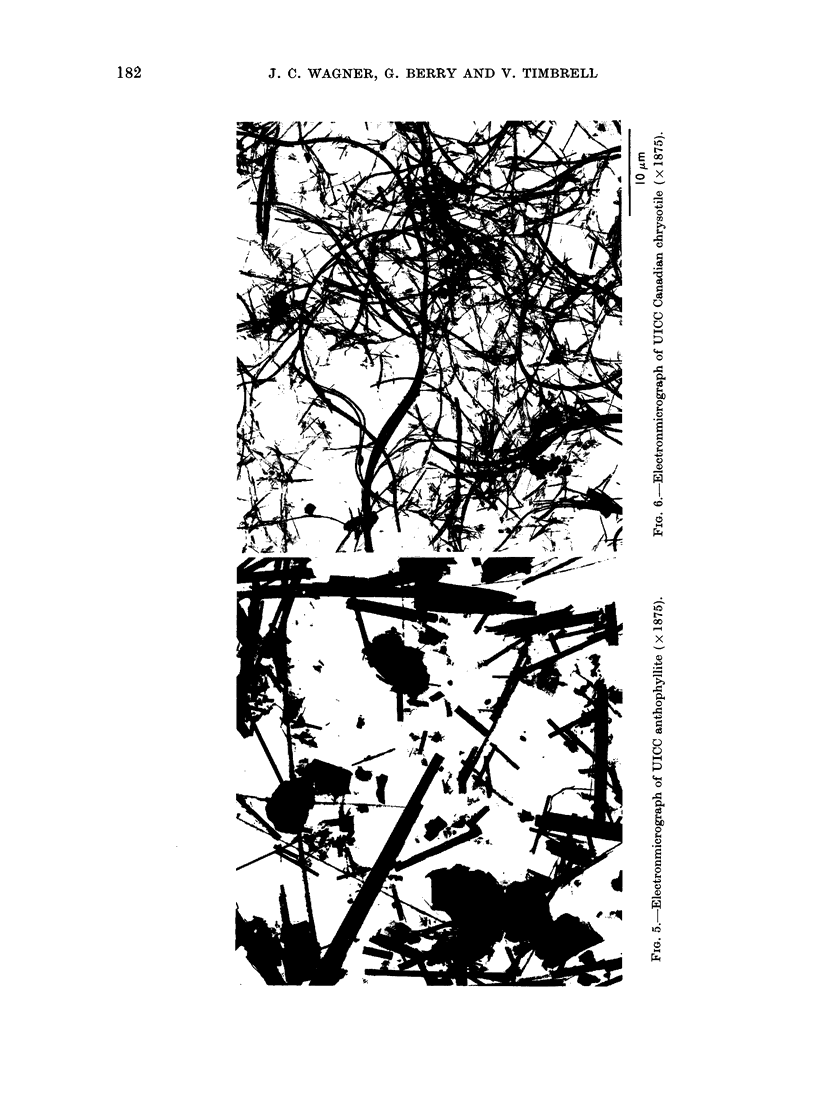
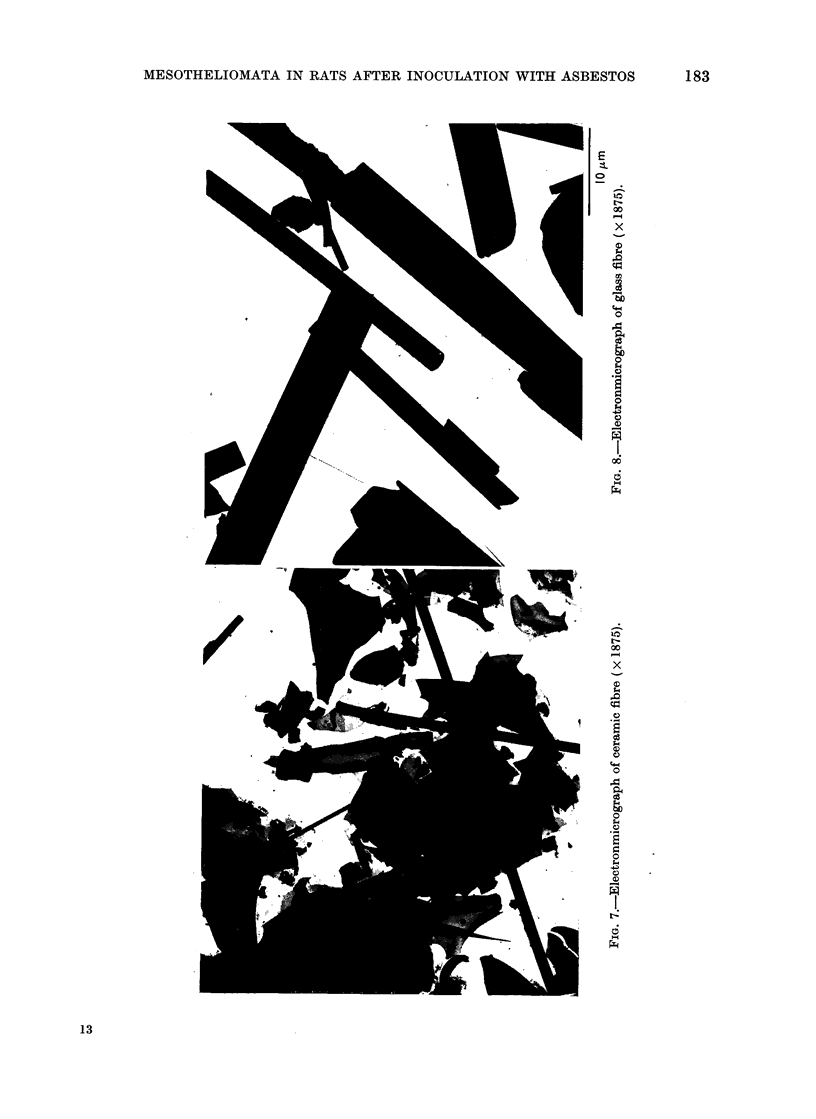
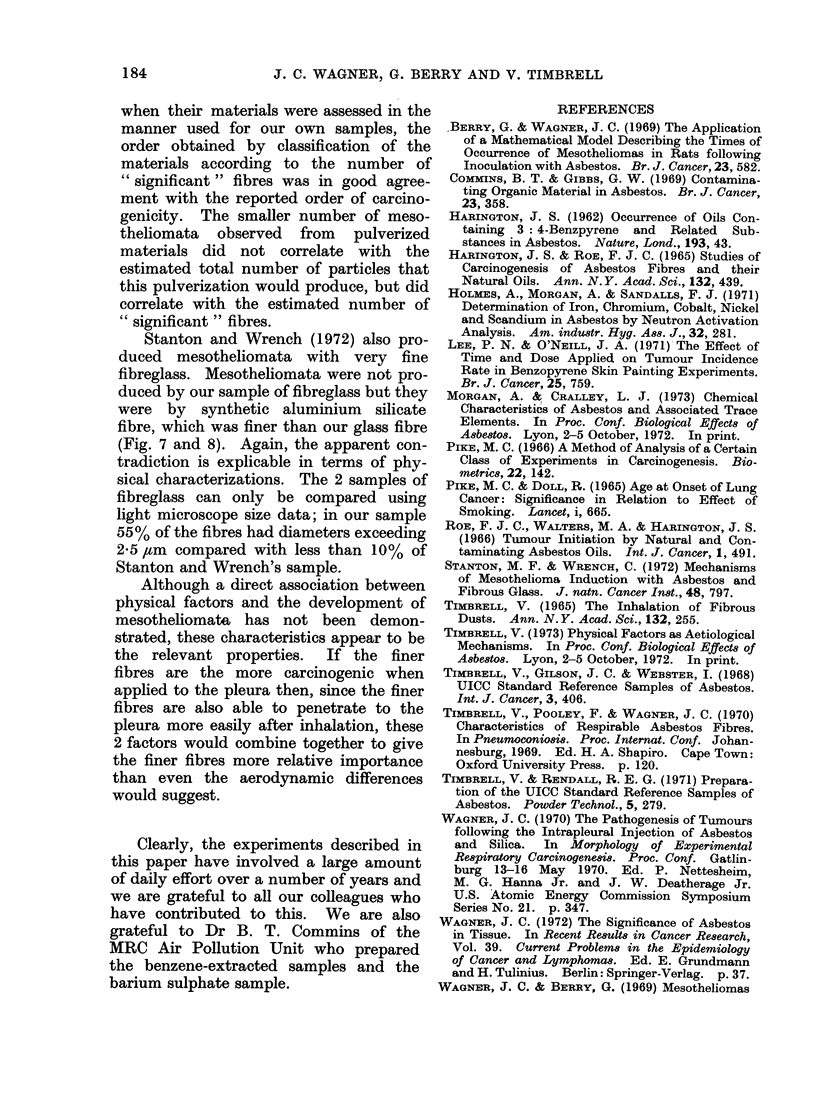
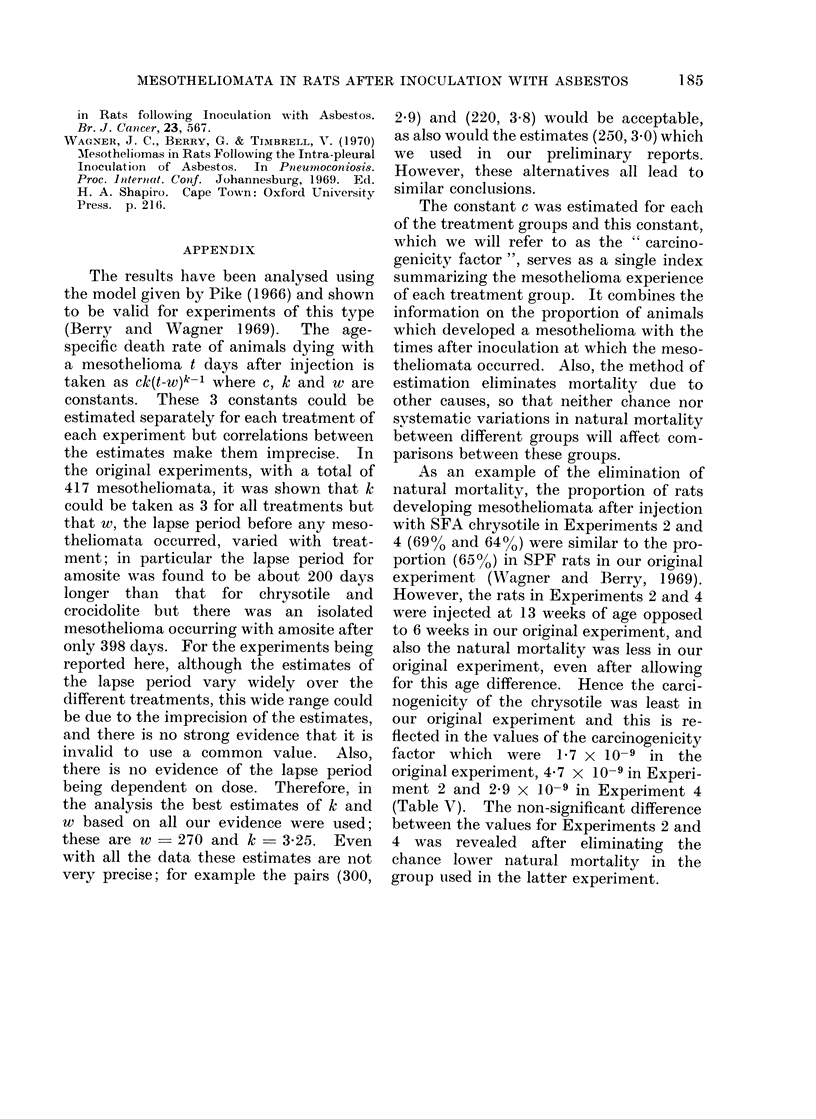
Images in this article
Selected References
These references are in PubMed. This may not be the complete list of references from this article.
- Berry G., Wagner J. C. The application of a mathematical model describing the times of occurrence of mesotheliomas in rats following inoculation with asbestos. Br J Cancer. 1969 Sep;23(3):582–586. doi: 10.1038/bjc.1969.71. [DOI] [PMC free article] [PubMed] [Google Scholar]
- Commins B. T., Gibbs G. W. Contaminating organic material in asbestos. Br J Cancer. 1969 Jun;23(2):358–362. doi: 10.1038/bjc.1969.46. [DOI] [PMC free article] [PubMed] [Google Scholar]
- Harington J. S., Roe F. J. Studies of carcinogenesis of asbestos fibers and their natural oils. Ann N Y Acad Sci. 1965 Dec 31;132(1):439–450. doi: 10.1111/j.1749-6632.1965.tb41125.x. [DOI] [PubMed] [Google Scholar]
- Holmes A., Morgan A., Sandalls J. Determination of iron, chromium, cobalt, nickel, and scandium in asbestos by neutron activation analysis. Am Ind Hyg Assoc J. 1971 May;32(5):281–286. doi: 10.1080/0002889718506461. [DOI] [PubMed] [Google Scholar]
- Lee P. N., O'Neill J. A. The effect both of time and dose applied on tumour incidence rate in benzopyrene skin painting experiments. Br J Cancer. 1971 Dec;25(4):759–770. doi: 10.1038/bjc.1971.90. [DOI] [PMC free article] [PubMed] [Google Scholar]
- PIKE M. C., DOLL R. AGE AT ONSET OF LUNG CANCER: SIGNIFICANCE IN RELATION TO EFFECT OF SMOKING. Lancet. 1965 Mar 27;1(7387):665–668. doi: 10.1016/s0140-6736(65)91824-6. [DOI] [PubMed] [Google Scholar]
- Pike M. C. A method of analysis of a certain class of experiments in carcinogenesis. Biometrics. 1966 Mar;22(1):142–161. [PubMed] [Google Scholar]
- Roe F. J., Walters M. A., Harington J. S. Tumour initiation by natural and contaminating asbestos oils. Int J Cancer. 1966 Sep 15;1(5):491–495. doi: 10.1002/ijc.2910010508. [DOI] [PubMed] [Google Scholar]
- Stanton M. F., Wrench C. Mechanisms of mesothelioma induction with asbestos and fibrous glass. J Natl Cancer Inst. 1972 Mar;48(3):797–821. [PubMed] [Google Scholar]
- Timbrell V., Gibson J. C., Webster I. UICC standard reference samples of asbestos. Int J Cancer. 1968 May 15;3(3):406–408. doi: 10.1002/ijc.2910030312. [DOI] [PubMed] [Google Scholar]
- Timbrell V. Human exposure to asbestos: dust controls and standards. The inhalation of fibrous dusts. Ann N Y Acad Sci. 1965 Dec 31;132(1):255–273. doi: 10.1111/j.1749-6632.1965.tb41107.x. [DOI] [PubMed] [Google Scholar]



